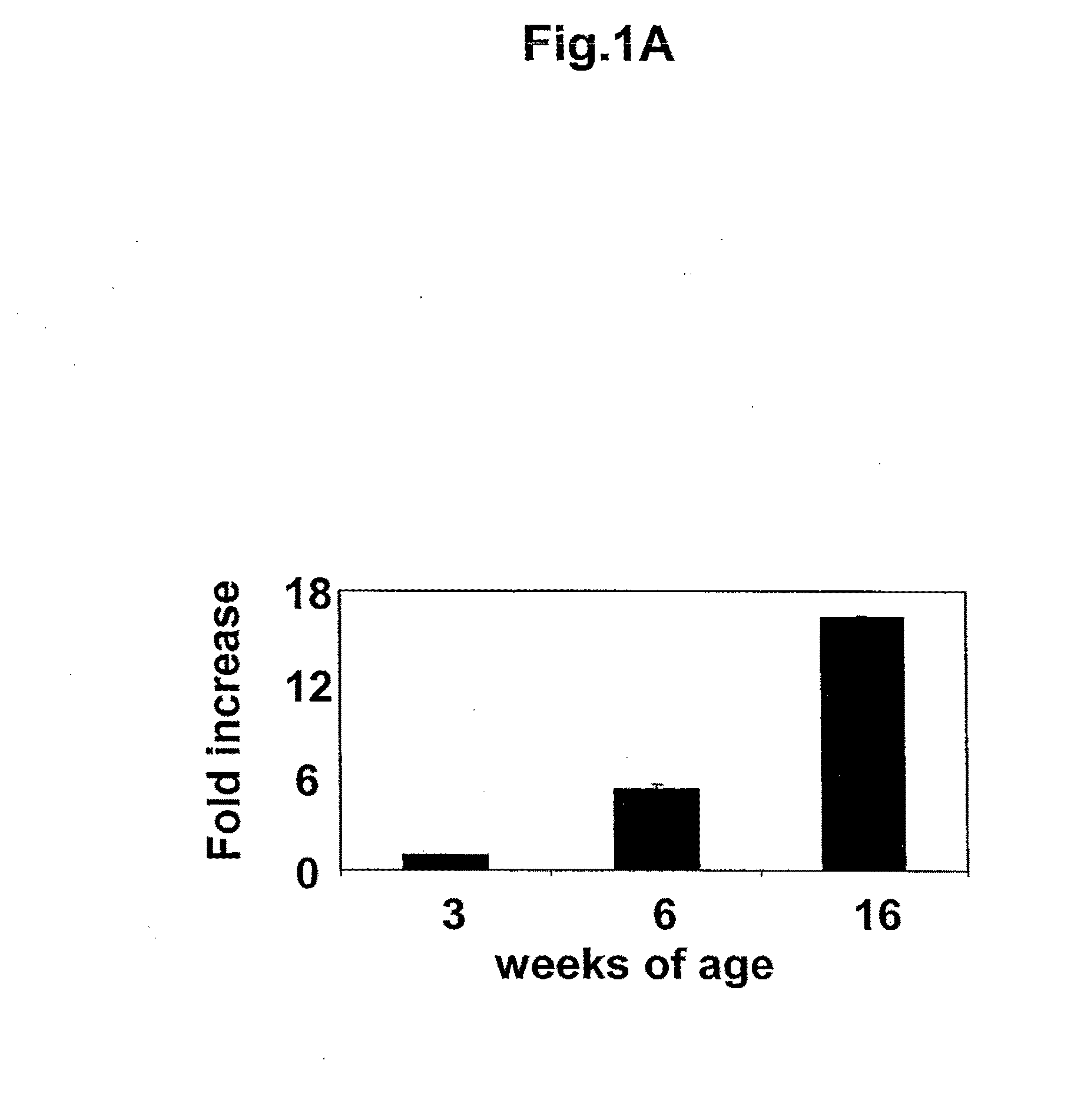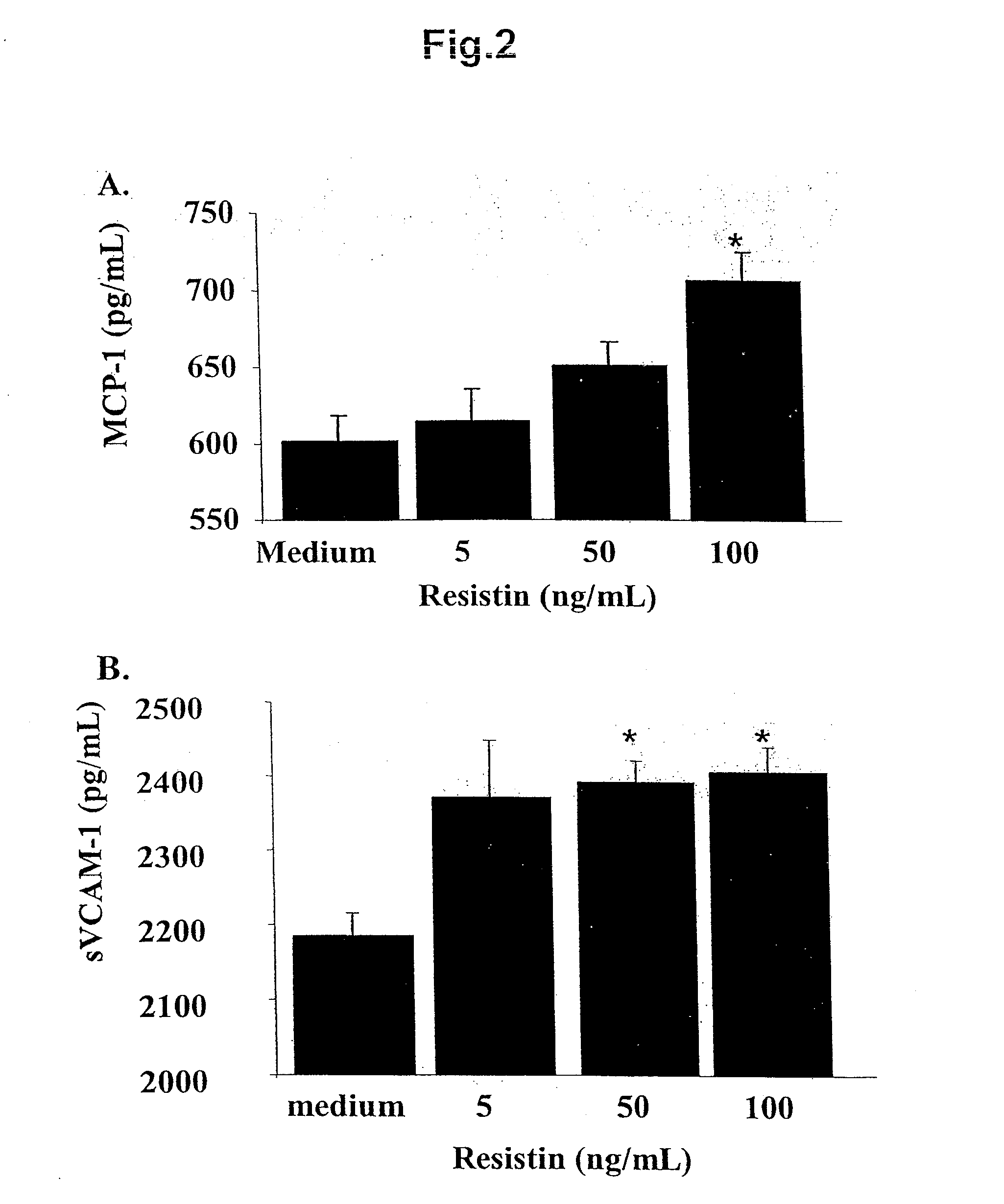Methods of diagnosing cardiovascular disease
a cardiovascular disease and method technology, applied in the field of cardiovascular disease diagnosis, can solve the problems of reducing the ability to deliver oxygen and nutrients to the heart muscle, affecting reducing the severity so as to assess the prognosis of vascular conditions and/or vascular events, the effect of reducing the severity
- Summary
- Abstract
- Description
- Claims
- Application Information
AI Technical Summary
Benefits of technology
Problems solved by technology
Method used
Image
Examples
example 1
Resistin Expression in ApoE− / − Aortas
[0066]In the initial micro array analysis, many genes previously determined to be involved in atherosclerosis were found to be upregulated over time in the apoE− / − aortas. A representative group of these pro-atherosclerotic genes can be found in Table 1. Complete lists of upregulated and downregulated genes are included in Data Supplements 1 and 2, respectively. Surprisingly, applicants found that resistin mRNA levels increased over time in the ApoE− / − aortas. Differences in expression levels of resistin, osteopontin, and mmp-12 were confirmed using TaqMan (Table 1). A second group of animals were then used to compare resistin mRNA levels in both ApoE− / − and wild-type C57BL / 6J− mice. While murine resistin mRNA levels increased over time in the aortas of both ApoE− / − and wild-type mice, resistin mRNA levels were significantly higher in the ApoE− / − mice at each time point. FIG. 1A is a graphical representation of changes in resistin mRNA levels, ov...
example 2
Resistin Induction of Gene Expression in Murine Aortic ECs
[0069]When incubated with murine aortic ECs for 24-48 hours, recombinant murine resistin increased levels of both MCP-1 and sVCAM-1 in the conditioned medium. These results are illustrated in FIG. 2.
example 3
Immunohistochemistry of Human Samples
[0070]Human carotid endarterectomy samples were stained with anti-human resistin antibody; resistin was found to be present in the lesions (a representative sample is shown in FIG. 3A). An internal mammary artery (IMA) sample, with no signs of atherosclerosis, was stained to determine if resistin was present in normal arteries. While there was slight staining in the IMA, most of the immunopositivity was in the adventitia rather than in the media or intima (FIG. 3B).
PUM
| Property | Measurement | Unit |
|---|---|---|
| time | aaaaa | aaaaa |
| time | aaaaa | aaaaa |
| time | aaaaa | aaaaa |
Abstract
Description
Claims
Application Information
 Login to View More
Login to View More - R&D
- Intellectual Property
- Life Sciences
- Materials
- Tech Scout
- Unparalleled Data Quality
- Higher Quality Content
- 60% Fewer Hallucinations
Browse by: Latest US Patents, China's latest patents, Technical Efficacy Thesaurus, Application Domain, Technology Topic, Popular Technical Reports.
© 2025 PatSnap. All rights reserved.Legal|Privacy policy|Modern Slavery Act Transparency Statement|Sitemap|About US| Contact US: help@patsnap.com



